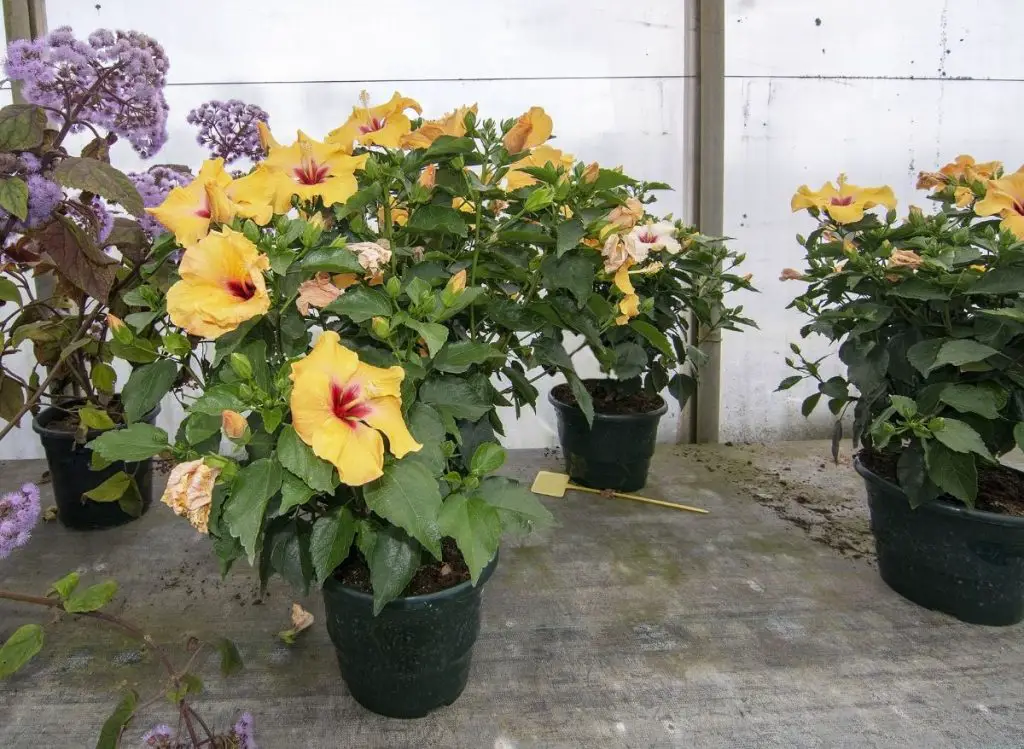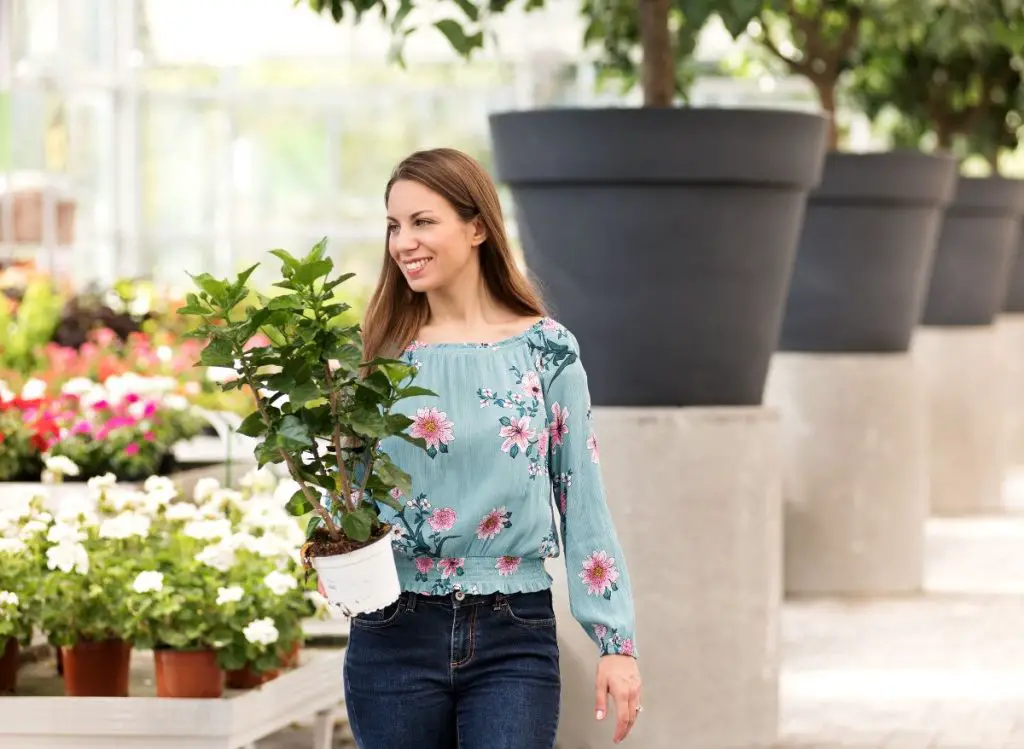
Hibiscus (Hibiscus spp.) is a genus of flowering plants member of the mallow family, Malvaceae.
Watering is essential whether you grow hibiscus in a container or in the ground. However, container-grown hibiscus requires more frequent watering than hibiscus grown in the soil, as containers generally hold a limited amount of water.
So, how often to water hibiscus In pots? Hibiscus in pots generally requires watering about 3 to 4 times weekly in early summer and daily toward the end as the plants begin to grow. In addition, tropical hibiscus plants need consistently moist; it is generally a good idea to water whenever the top inch of soil is dry. To check your soil, stick your finger in the.
Read on to learn everything you need to know to care for potted hibiscus properly. And, if you are already growing hibiscus, you might be wondering why your hibiscus is not Flowering. I wrote a whole sharing the main reasons why and how to fix this issue.
How Do You Care For a Potted Hibiscus?
Potted hibiscus requires daily watering; on the other hand, garden hibiscus requires watering about every other day.
Both need proper; here is how to care for potted hibiscus plants:
Fertilizing Potted Hibiscus
Potted hibiscus requires fertilization more frequently than those planted in garden beds. You should fertilize your hibiscus about once a week during the blooming period.
The best fertilizer for potted hibiscus is a slow-release 14-14-14 fertilizer, or one mainly made for hibiscus plants should work fine. However, avoid going too overboard, as too much phosphorus could bring your hibiscus to an expected end.
If you want your hibiscus to bloom fast, choose a fertilizer with a bit of extra magnesium and iron.
Caring For Potted Hibiscus During Winter
Hardy hibiscus doesn’t require much care over the winter. However, tropical hibiscus typically tolerates up to one or two nights of a light frost. They do not like cold, rainy weather and wet soil.
It is a good idea to bring them inside before the temperature drops below 40 to 45 degrees Fahrenheit at night to avoid damaging your hibiscus plants.
How to care for hibiscus during wintertime? Showering your hibiscus during wintertime effectively eliminates insects and makes it look better. Ensure you seal off the pot around the stem and spray both sides of the hibiscus leaves with warm water, not too hot. You can do this a couple of times a winter.
Caring For Potted Hibiscus During Summer
Hibiscus plants are cold-sensitive, so avoid temperatures below 40 F at night and extremely rainy and cold weather. You must also watch for too much sun that could burn the leaves.
Once the plants have acclimated, hibiscus plants like direct sunlight. But if the temperatures are around 90 degrees, give your hibiscus plants a bit of shade during the day’s heat to encourage blooming.

How To Choose a Container For An Hibiscus Plant?
Keep one manageable when selecting a container to put your hibiscus in. Hibiscus plants grow well in a slightly tight fit around their roots, so choosing a smaller pot with drainage holes will be better. Find a sunny windowsill to put your hibiscus plants on if you plan to keep them indoors. And don’t let it touch the glass, as the sun can heat the windowpane and scorch the plant.
The best thing about growing hibiscus in a container is that it allows you to move your plants around to ensure their needs are met.
For example, if the spot you selected for your hibiscus isn’t getting sufficient sun, you can quickly move it to a new one. Once temperatures drop, you can even bring it inside to overwinter it so you can continue to enjoy it for a second summer.
Type of Containers: Plastic containers typically retain water for much longer than clay pots, meaning that hibiscus plants grown in plastic pots are more like to be over-watered than those potted in clay or wooden containers.
Setting a Summer Watering Routine
It is recommended to water hibiscus plants at least once every week in the summertime. Inspect your hibiscus at least once weekly during the summer months and more regularly when the weather is warm.
Generally, the soil will dry more quickly during the summertime as heat and extra sunlight contribute to the evaporation of surface moisture, which means that hibiscus requires more water. Use a moisture meter to determine when your hibiscus is dry and needs more water.
How To Water Potted Hibiscus Plants
- Ensure not to over-water, and keep your plant on the dry side.
- Hibiscus plants like humid weather, so misting the leaves daily or using a humidifier is beneficial.
- Another way to improve the humidity is to load a large tray with gravel, set the pot on top, and then load the tray with water up to the top of the gravel.
- As the water vaporizes, the humidity will increase around the plants.
- The ideal pH for hibiscus plants soil is 6.0 to 7.0. Tropical hibiscus thrives if they have excellent drainage (Source: North Dakota State University)
What to read next:
- How Much Water Does a Hibiscus Need? (This much!)
- Brassica Flower Vs. Hibiscus Flower: What Are The Differences.
- 5 Hibiscus Plant Diseases To Look Out For!
Wrapping Up
Hibiscus in pots needs to be watered about 3 to 4 times weekly in the early summer and every day toward the end as the plants start to grow.
Hibiscus plants are water-loving; however, they can easily be overwatered. You need to watch out for some signs of overwatering:
- Yellow-colored and swollen leaves.
- The plant starts to wilt even though its soil is wet.
- Bad-smelling roots.

